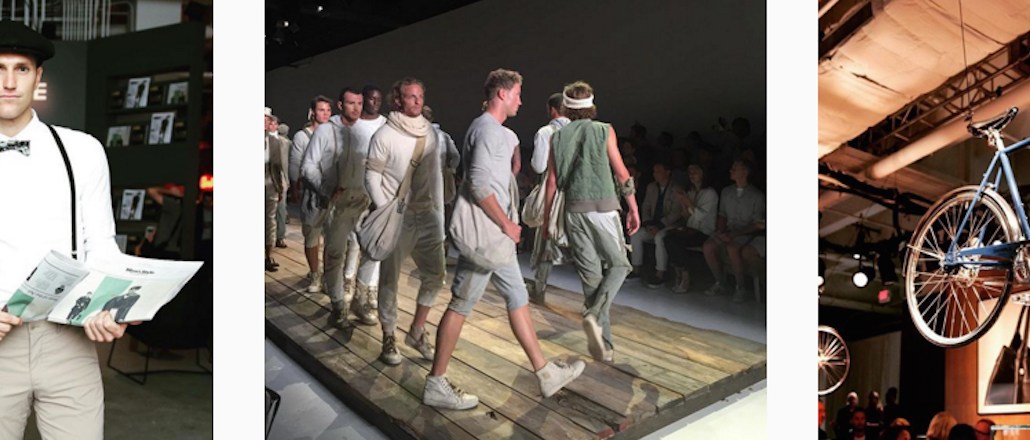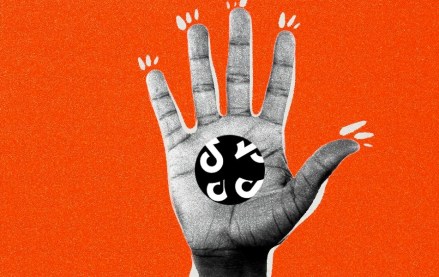Insights from CTV leaders at Dentsu, Horizon Media and more

In January, Axe pivoted. The body-spray brand departed from its former one-note campaign featuring a buff spokesbro coaching other dudes on how to win over women. Called “Find Your Magic,” and created with 72andSunny Amsterdam, the campaign instead advocates that men embrace whatever makes them individuals — a big nose, an affinity for wearing high heels, red hair — and then spruce it up with Axe products. The ad will air during this Sunday’s Super Bowl.
The new ad suggests that there’s more to men than what stereotypes would suggest, something Axe isn’t the first to notice. Three years ago, work boot brand Timberland Pro was stuck in a rut with its marketing: tough and rugged with an emphasis on brawn. Timberland Pro’s “When Your Feet Hurt” campaign, made with The Martin Agency, resulted from this recognition of a more nuanced male consumer, and the company has refreshed its TV and digital ad spots every year since its 2013 inception.
“We looked at what other brands were doing in our category, and they were approaching men as one-dimensional,” said Rebecca Conway, a senior marketing manager with Timberland Pro. “They focus on muscles and toughness. By zooming in on our guy’s personality, we realized we could connect to the more emotional side of men today.”
The ads, first Timberland’s and now Axe’s, represent a shift in how contemporary men view themselves. As traditionally rugged work boots and overtly “manly” body sprays give their campaigns sensitive makeovers, the retail industry has been adjusting to give the more nuanced man his proper dues.
The millennial generation — followed by the younger Gen Z set — is pushing back on the traditional idea of masculinity, evidenced by the fashion choices young men are willing to make. In a 2014 end-of-year report, “Wake Up: A Strategic Intel Report on Men,” L.A. agency Omelet describes how today’s men are approaching style: “Fashion, once a difficult and almost taboo nut for men to crack, is now more accessible than ever, and men are following suit and shelling out.” Menswear retail sales have grown by 70 percent since 1998, and what Omelet dubs the “peacock revolution” is the sartorial result of millennial men bucking former “beer-chugging, pizza-eating, baby-fearing stereotypes.”
“About five to six years ago, we started noticing this new male consumer,” said Cory Rosenberg, a former investment banker who helped launch Hook & Albert, a line of clothing accessories for men. “Today, he’s more conscious than ever about fashion. He’s paying attention to not only the way he looks but to the fit of his clothes, what he’s buying and where, and its authenticity.”
Hook & Albert makes pieces that Rosenberg and his founding partner, Adam Schoenberg, felt were missing from men’s wardrobes: decorative but understated lapel pins, colored shoelaces and floral printed wallets that add a pop of color. The idea is that men who haven’t experimented much with fashion can update their wardrobes without too much investment.
“That old word — metrosexual — is gone. It’s not a bad thing anymore to take your time to look good,” said Rosenberg.
A more prominent focus on menswear runs the gamut from high- to low-end retail. Fast-fashion companies like Asos and Forever 21, which are most often associated with womenswear, launched new menswear-specific Instagram handles in 2015 to reach more male consumers. In July, the inaugural New York Fashion Week: Men’s debuted to parade designers’ menswear offerings down the runway. The weeklong fashion event returned this year on February 1, and will be back again in the summer.
The Council of Fashion Designers of America, the organization in charge of New York Fashion Week, reports “an ever-growing number of men’s designers applying to CFDA, as well as more blogs and menswear-specific retailers coming up,” said Steven Kolb, president and CEO of CFDA. “What’s still a small part of our business has become a strong contributor to the overall business of fashion.”
Kolb also credits social media for bringing accessible yet higher-brow menswear fashion to the attention of the masses, saying that “instantaneous, broadcast distribution of fashion,” blogging, e-commerce and social media has put fashion in the “face of the guy consumer.”
It’s not only menswear designers and fast-fashion retailers spreading the word to millennial men that dressing well and putting work into your clothing is no longer for the effeminate. Professional athletes are blazing the trail, as the NBA’s Russell Westbrook, Dwyane Wade and Lebron James, and the NFL’s Cam Newton have simultaneously become style icons when they’re not in jerseys. On Sunday, Newton wore a pair of $850 Versace jeans as he boarded a plane with his fellow Carolina Panthers en route to the Super Bowl. They promptly stirred conversation on Twitter and Instagram, and sold out in online stores.
GQ Business trip with my QB #aceboog1e #superbowl50 #panthernation #nicepants @gq #nfl
A photo posted by Jonathan Stewart (@jonathanstewar1) on
“Many athletes have gravitated toward fashion and are addressing much more fashion-forward styles than they have in the past,” said Kolb. “Young men look to athletes and are influenced by that.”
Menswear’s cultural moment became clear to JackThreads in 2014, before the men’s clothing brand split off from former parent company Thrillist Media Group. The team held a focus group to talk about what style means to these millennial men.
“It became very clear in these conversations that former stereotypes were no longer the case,” said JackThreads CMO Ryan McIntyre. “Men’s style is a true reflection of who you are and what you want to put out there into the world. These men don’t want to showboat, but they want to seem like they’ve got it together.”
For menswear retailers who tap into that balance between looking good without trying too hard, there’s lucrative opportunity. According to Nielsen data, millennial men are estimated to have $200 million in buying power, and that doubles when influence over parents’ purchases is taken into consideration.
“Millennials have different tastes and concerns than Gen X and Baby Boomers,” said Patricia Marchetti, Spredfast’s retail market director.
“The macho-man approach feels outdated to me,” said Timberland’s Conway. “There are so many more dimensions to men today, and emotions that you can tap into.”
More in Marketing

Retail media’s mid-2025 reality: Why advertisers are going all in on full-funnel
Retail media’s meteoric rise may finally be leveling off — and that’s forcing advertisers to take a harder look at what they’re getting for their money.

TikTok might be working on a standalone U.S. app, but marketers aren’t sold on the idea – yet
TikTok is developing a lifeboat for its American business, but media buyers are wary of advertising implications.

Bold Calls for the back half of 2025
Now’s a good moment as any to take stock —and make a few bold calls about what’s coming next.





